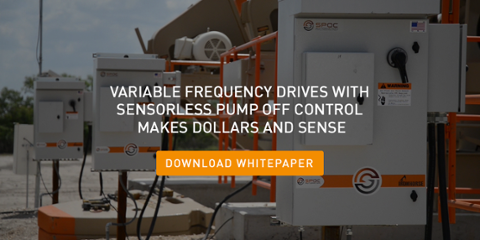
Oilmen go where the oil is. Often that means remote, rugged or rural areas—sometimes all three. It should not be surprising, then, that power services may be limited or lacking altogether.
In heavily developed industrial areas, three-phase power is quite common. The infrastructure is in place for this preferred power. Motors are generally designed to work on three-phase power, so in this environment things are fairly straightforward.
Out in the oilfield, on the other hand, chances are that operators need to make do with rural electricity—single-phase power. In fact, operators may count themselves lucky they have power service at all.
Four Choices in the Oilfield
- Use a single-phase motor. Single-phase motors are only available at smaller sizes. Also, single-phase motors can be unreliable and are 10% less efficient that three-phase motors.
- Wait for three-phase service. It might seem obvious that operators should simply request three-phase service from the local utility. Two problems come with that approach. First, it could cost $15,000 to $50,000 per mile to bring three-phase to the location. Second, because of other restrictions the wait for three-phase service could be 12-18 months or more. This option is not attractive at all.
- Introduce rotary or capacity phase converters. These converters enable operators to connect their three-phase motors to single-phase power. However, this is inefficient and limited. There can be maintenance issues and the utilities do not like this approach because operators are essentially running industrial load on residential power. There is a motor size limit that utilities will allow, and the motor is subjected to the problems of direct connecting, including in-rush current. This option also requires oversizing the motor, adding cost to the overall project.
- Connect a pump drive between the power and motor. Pump drives are outfitted with the capacity to convert single- to three-phase power. They also protect equipment from in-rush current and protect the utility from low power factor conditions.
Connecting a pump drive makes great economic sense in this situation. The drive:
- Converts single- to three-phase power
- Avoids the hazards of in-rush current on startup
- Eliminates the risk of power factor penalties from the utility
- Reduces power consumption by up to 40%
- Controls pump off and other pump operations
- Reduces maintenance costs through better process control
- Increases production by avoiding downtime
If your operation takes you to the edge of the power grid (or beyond), pump drives can provide better control and lower cost. Let us show you how.

To see how a variable frequency drive with sensorless pump off can save you money click here.

